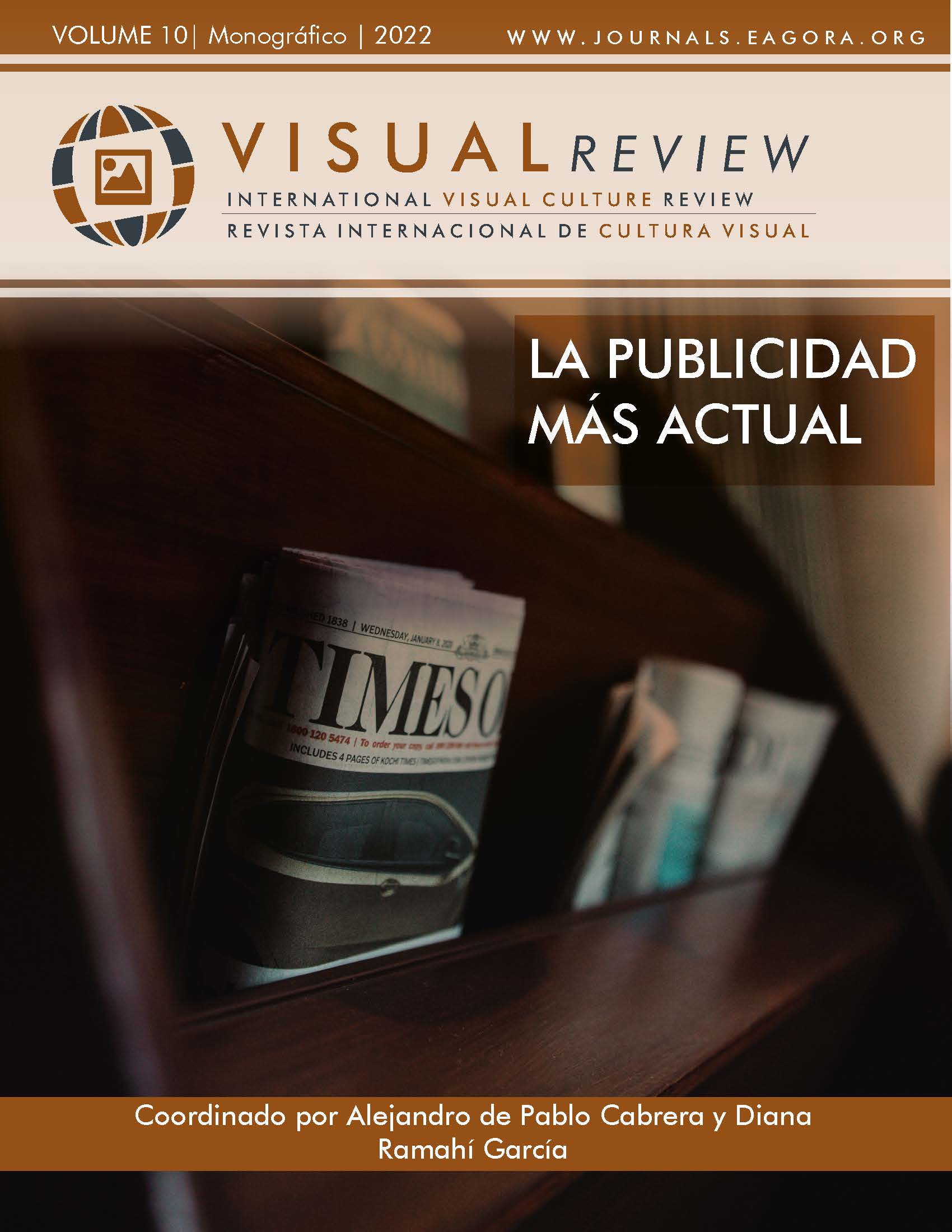The social representation of the Trans collective in current advertising: the Pantene case
DOI:
https://doi.org/10.37467/revvisual.v9.3595Keywords:
LGTIBQ collective, Trans Collective, Social representations, Hate crimes, Invisibility, Advertising, Content analysisAbstract
The objective of this research is to determine the social representation that, of the trans collective, builds the advertising of Pantene in the ad: "Recreated family photo". The campaign is novel because it aims to combat stereotypes imposed by society in relation to physical appearance and because it works with a minority of the LGTBIQ+ community, prone to being victims of hate crimes. The content analysis carried outallows us to conclude that although the message aims to positively influence both trans people and society, an incomplete social representation of the collective is still offered.
Downloads
Global Statistics ℹ️
|
725
Views
|
624
Downloads
|
|
1349
Total
|
|
References
Alianza Gay y Lésbica Contra la Difamación (2010). Guía para los medios-De la Alianza Gay y Lésbica Contra la Difamación. Para uso en los medios en español. https://www.glaad.org/files/spanishlanguagemediaguide.pdf
Bernete, F. (2013). Análisis de contenido. En A. Lucas Marín y A. Noboa (Coord.), Conocer lo social: estrategias y técnicas de construcción y análisis de datos (pp. 221-261). Fragua, Fondo de Cultura Universitaria. https://eprints.ucm.es/id/eprint/24160
Control Publicidad (2020). Segunda entrega de El pelo no tiene género de Pantene. Control Publicidad. 24 de noviembre. https://bit.ly/3owKPzS
Cortés, J. I. (2021, 28 de enero). Asesinatos de personas LGBTI: Cuando ser uno mismo se paga con la vida. Amnistía Internacional España. https://bit.ly/3osn2Bk
Del Castillo Martínez, C. (2016). Jóvenes gay universitarios y su representación social de la homosexualidad. [Tesis de Grado] Universidad Autónoma de la Ciudad de México). https://bit.ly/3BeOv0R
Díaz Soloaga, P. (2007). Valores y estereotipos femeninos creados en la publicidad gráfica de las marcas de moda de lujo en España. Anàlisi: quaderns de comunicació i cultura, 35, 27-45. https://raco.cat/index.php/Analisi/article/view/74253
Domínguez, Y. (2017). Revelando estereotipos que no nos representan [vídeo]. YouTube. https://youtu.be/H1C-vG4yBMI
Jodelet, D. (1986). La Representación Social-Fenómenos Concepto y Teoría. En S. Moscovici (Ed.), Psicología Social II, (pp. 469-494). Paidos.
Martín Serrano, M. (2004). La producción social de comunicación (3ª Ed.). Ciencias Sociales, Alianza Editorial.
Martínez-Tuero, V., Gutiérrez-Pérez, J., & Villamañan-Alba, M. (2020). Representación social de lo trans* en el cine cubano, en el período del 2000 al 2019. Revista Sexología y Sociedad, 26(2) http://revsexologiaysociedad.sld.cu/index.php/sexologiaysociedad/article/view/689
Ministerio de Sanidad, Servicios Sociales e Igualdad (2018). Glosario de términos sobre diversidad afectivo sexual. Plan Nacional sobre el Sida, Ministerio de Sanidad, Servicios Sociales e Igualdad. https://bit.ly/3PTzfKO
Naciones Unidas (1981). Convención sobre la eliminación de todas las formas de discriminación contra la mujer. Derechos Humanos. Oficina del Alto Comisionado. 3 de septiembre. https://bit.ly/3PzcTP5
Organización Mundial de la Salud (2021). Ciclo de la vida. Biblioteca electrónica de documentación científica sobre medidas nutricionales (eLENA). https://www.who.int/elena/life_course/esn/
Pelo Pantene (2020). Foto de familia recreada (Full length) #ElPeloNoTieneGenero [Vídeo]. Youtube. https://youtu.be/dIA2CSaIAxA
Reasonwhy (2019). Pantene contra los estereotipos: El pelo no tiene género. , 20 de noviembre. https://bit.ly/3PSEURG
Reasonwhy (2020). Pantene vuelve a apoyar a la comunidad trans con una segunda entrega de El pelo no tiene género. 24 de noviembre. https://bit.ly/3cAhIJp
Sánchez Soriano J. J., & García Jiménez, L. (2019, enero). La investigación en comunicación LGTBI en España: estado de la cuestión y perspectivas de futuro. Revista Prisma Social, 28, 161-175. https://revistaprismasocial.es/article/view/3358
Transgender Europe (2020). Actualización TMM: Día de la Memoria Trans 2020. 11 de noviembre. https://transrespect.org/es/tmm-update-tdor-2020/
Velasco Malagón, T. E. (2017). Representaciones sociales de la transexualidad y de las personas transexuales en España. [Tesis doctoral] Universidad Complutense de Madrid. https://eprints.ucm.es/id/eprint/42016/
Villena Espinosa, R. (2020). 50 años de orgullo. Un repaso escrito y visual por la historia del movimiento LGTBIQ+ en España. Vínculos de Historia, 9, 475-497. https://www.vinculosdehistoria.com/index.php/vinculos/article/view/vdh_2020.09.23/pdf DOI: https://doi.org/10.18239/vdh_2020.09.23
Downloads
Published
How to Cite
Issue
Section
License
Those authors who publish in this journal accept the following terms:
-
Authors retain copyright.
-
Authors transfer to the journal the right of first publication. The journal also owns the publishing rights.
-
All published contents are governed by an Attribution-NoDerivatives 4.0 International License.
Access the informative version and legal text of the license. By virtue of this, third parties are allowed to use what is published as long as they mention the authorship of the work and the first publication in this journal. If you transform the material, you may not distribute the modified work. -
Authors may make other independent and additional contractual arrangements for non-exclusive distribution of the version of the article published in this journal (e.g., inclusion in an institutional repository or publication in a book) as long as they clearly indicate that the work was first published in this journal.
- Authors are allowed and recommended to publish their work on the Internet (for example on institutional and personal websites), following the publication of, and referencing the journal, as this could lead to constructive exchanges and a more extensive and quick circulation of published works (see The Effect of Open Access).













